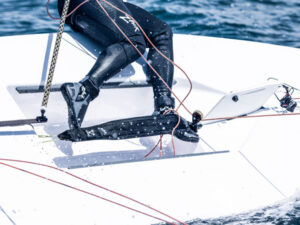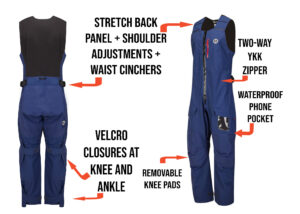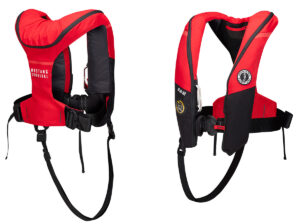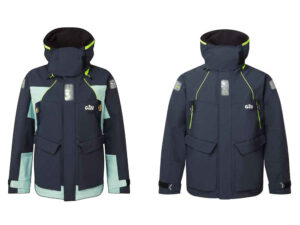Apparel
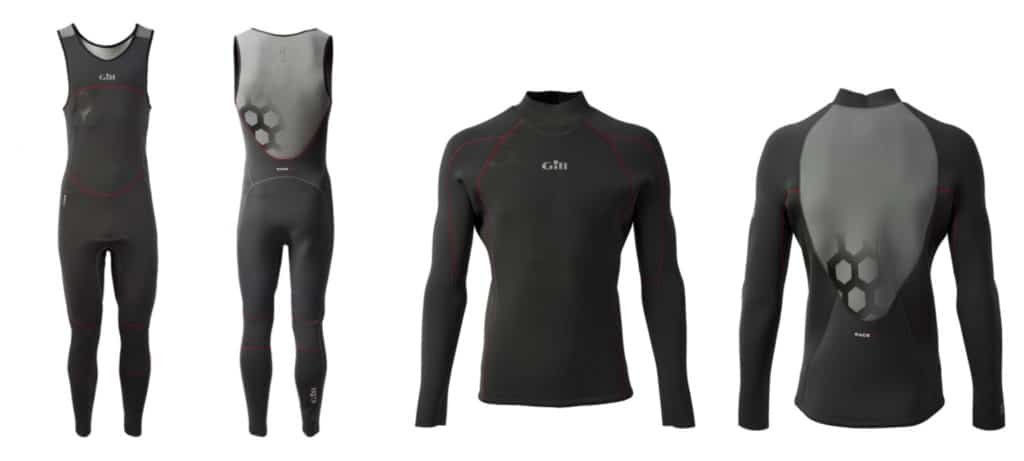
Face it, if you’re going to get wet, you might as well be ready for it with a proper wetsuit. Don’t worry about how much that snug suit reveals because victory has no vanity. Performance on the water starts and ends with comfort, and for that we have Gill’s new FireCell Skiff Suit and Top. They’re slick looking on the outside, but turn them inside out to see the magic and intricacy of these 3.5mm made-for-sailing wetsuits. “FireCell” neoprene panels have a soft waffle construction that retains body heat in miniature pockets. Flexible panels are in every critical area, and all the seams are glued and blindstitched to prevent water entry and chafe. On the outside, abrasion-resistant panels on the knees and seat will take the abuse of kinetic dinghy sailing. The Race FireCell Top, with high-stretch neoprene that’s backed with a soft wicking liner, pairs perfectly with the Skiff Suit. Early season Frostbite Laser sailing in Newport, with 50-degree water and 40-degree air temps, confirms one thing: the FireCell creates an oven by the time you reach the weather mark. As the mercury drops, add a spray top and you’re good to go all season. $169-269 • gillmarine.com
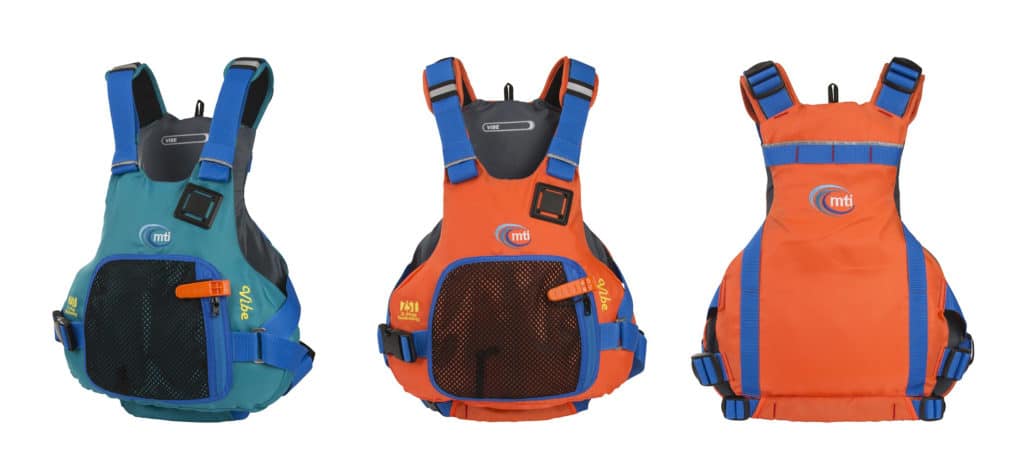
MTI Lifejackets is a major player in recreational paddle sports and their foray into the sailing market is with the Vibe PFD. The Vibe is U.S. Coast Guard Type III, and while it’s designed primarily for whitewater standup paddle boarding, it’s a proper fit for sailing because the foam panels are sculpted in way that the bulk is low and focused around the side and back, not high on the chest. In other words, when tacking, jibing or ducking under the boom, there’s no battle of the bulge. The “Z-strap” system, as well as waist and shoulder adjustments provide excellent custom fit, although, the shoulder adjustment points should be covered to prevent snags. The straps need to be trimmed of excess tails as well. A large mesh front pocket will hold a lot (bars, tape, sunblock), and includes a tethered whistle. With reflective detailing, the Vibe is available in safety orange or blue, which makes this PFD perfect for the Opti kid to the sportboat stud. $95 • mtilifejackets.com Find a Retailer
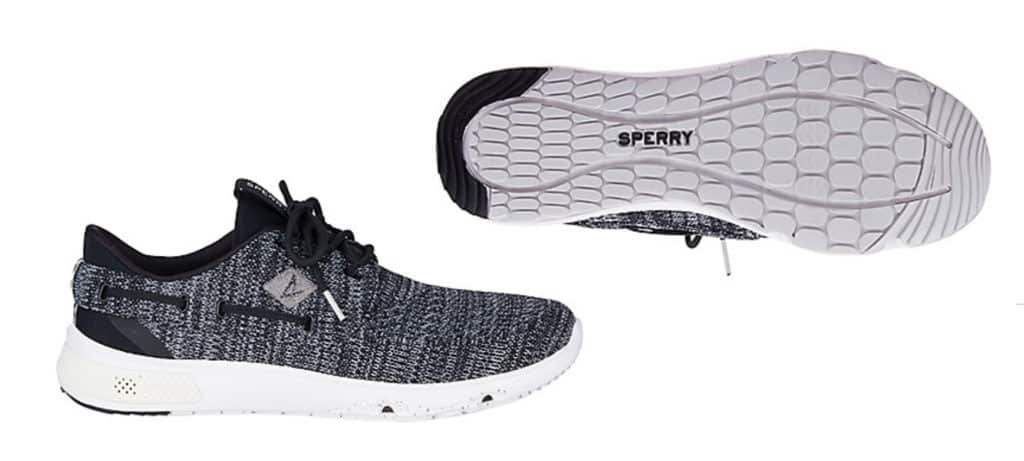
Sperry’s 7 Seas deck shoe is the perfect footwear for any size boat. Water runs straight out through the vented soles, and the woven mesh is hydrophobic so it dries quickly. The heel offers excellent support,for running around the pointy-end, or roll tacking a dinghy. Slip on a neoprene sock and you’ll even be able to wear them with your drysuit when the weather takes a turn. You don’t need to sacrifice style for performance either, so go ahead and wear them straight to the regatta party after racing. $89.95 • www.sperry.com

What sets Henri Lloyd’s Freedom Jacket apart from its competitors is clear, literally. The jacket’s hood features the Optivision system with clear panels allowing sailors full visibility. Windproof and waterproof from the hem to the hood, the jacket has a thick and high fleece collar for warmth and a visor for full-face protection. Henri Lloyd Photoluminescent Reflectors absorb UV light (sunlight or artificial) and after dark they release energy to increase illumination. Snug cuffs and draining pockets ensure a dry experience. $295.00 • www.henrilloydonline.com
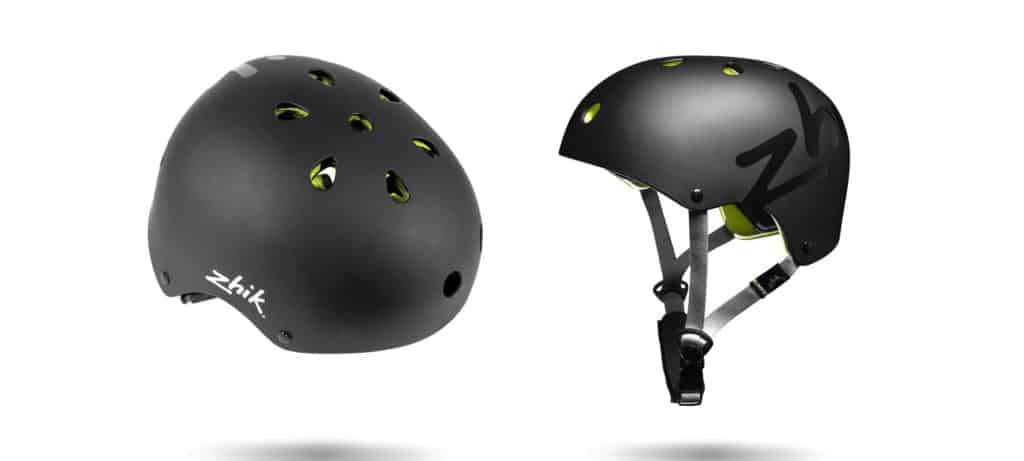
Whether you’re foiling at 40 knots or just know all too well why it’s called the boom, a sailing helmet offers crucial head protection. Zhik’s H1 helmet is a thin profile helmet that won’t make ducking under spars a challenge. Half-inch foam lining protects your most valuable asset, and internal channels allow for airflow to keep you cool, even on hot days. We put it to the test and found that of all the helmets we tried, the H1 came out ahead. $119 • www.zhik.com
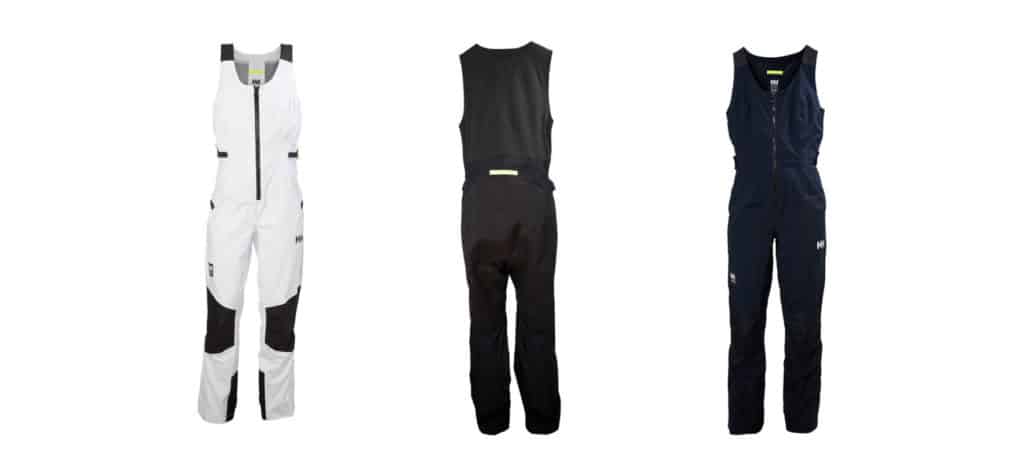
It’s hard to go wrong with anything from Helly Hansen, and these salopettes are no exception. The number one feature these bibs offer is breathability, despite being completely waterproof. No matter how hard you are on deck, or how far you are over the rail on a choppy day, sailors will stay warm and dry without sweating through them. While some salopettes have an overwhelming amount of fabric, the fit and cut of these pants are perfect. It’s also notable they have an adjustable hem, so whether you’re tall and lanky or petite, they can be adjusted to not drag the deck. $275 • www.hellyhansen.com
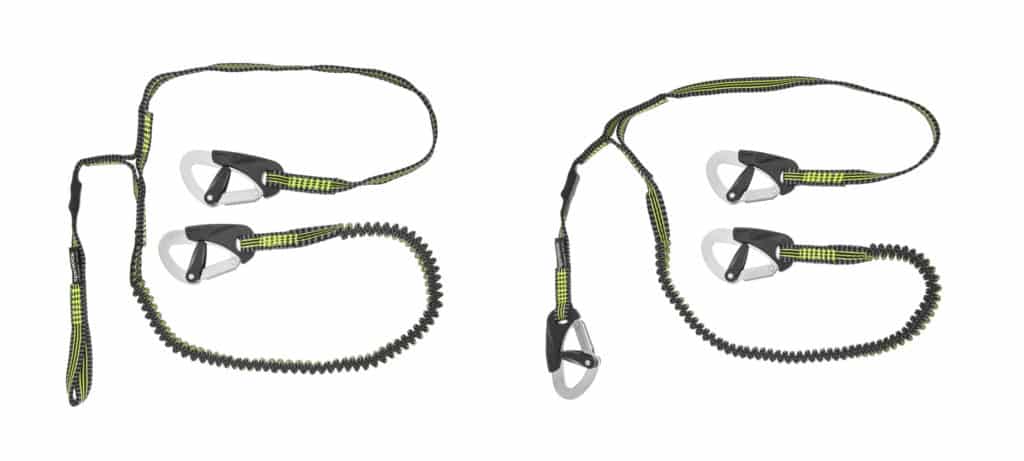
All the offshore personal safety gear you’ll have onboard for your next race is secondary to your tether. “Stay attached to stay alive,” is a motto to live by… World Sailing recently updated its offshore regulations for 2018 where all crew must now have a three-point safety line. Spinlock’s DW-STR/03 and DW-STR/3L safety lines both meet the new standard. They’ll be in high demand before next year’s Bermuda Race, so get one now. $160 • www.spinlock.co.uk
Accessories
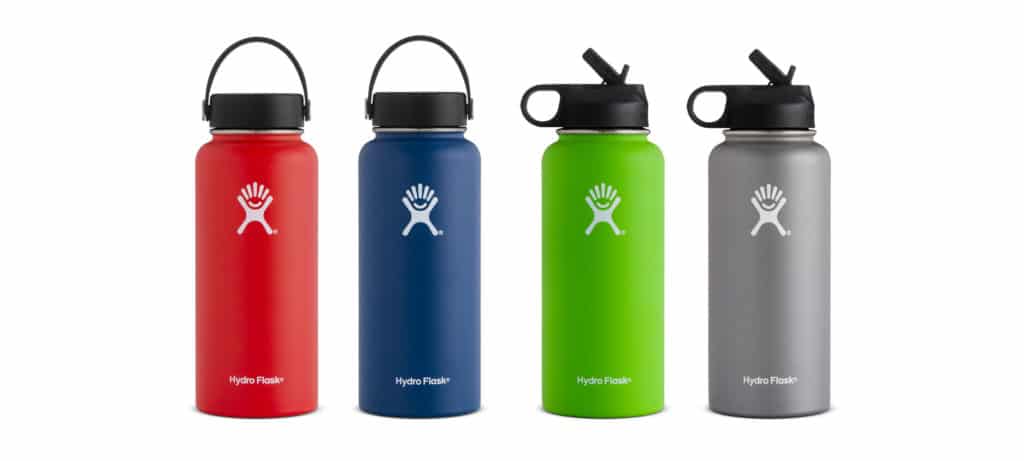
Take it from Terry Hutchinson, hydration is critically important. Drinking enough water during a day of racing often goes overlooked, but can have a big impact on your energy levels. Hydroflask’s rugged, vacuum-sealed, stainless steel water bottles will keep your favorite race day drink cold and stand up to the beating of rolling around down below. Hydroflasks range in size from 12 to 64 oz, but our favorite is the 32oz – enough water to keep you quenched all day, and it won’t take up too much space. $39.95 • www.hydroflask.com
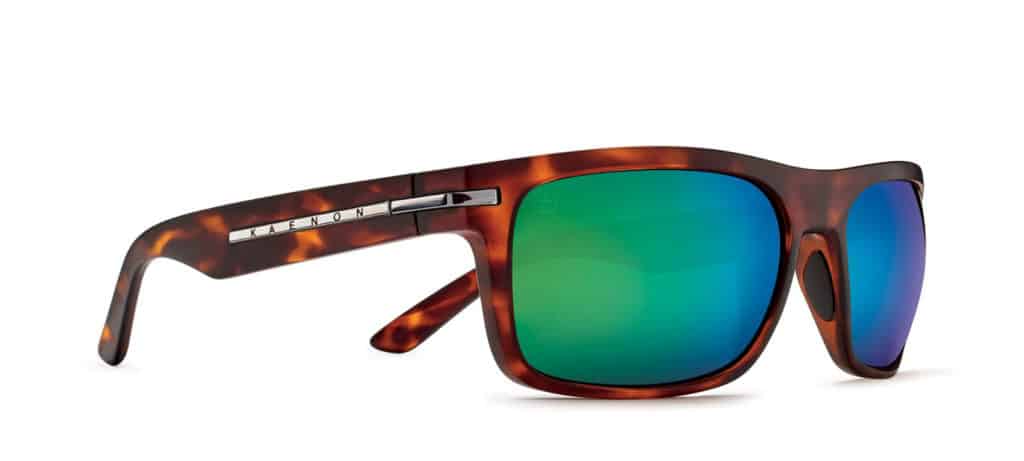
Every sailor should own a pair of Kaenon sunglasses. They’re rugged, stylish and come with an unbeatable warranty for when the saltwater takes its toll on your lenses. The Burnets – favorites of college sailors everywhere – are a top choice, with wide lenses that offer maximum protection, even for your peripherals. Pick from a variety of lenses to suit your needs (or style) and get out on the water. $239 • www.kaenon.com
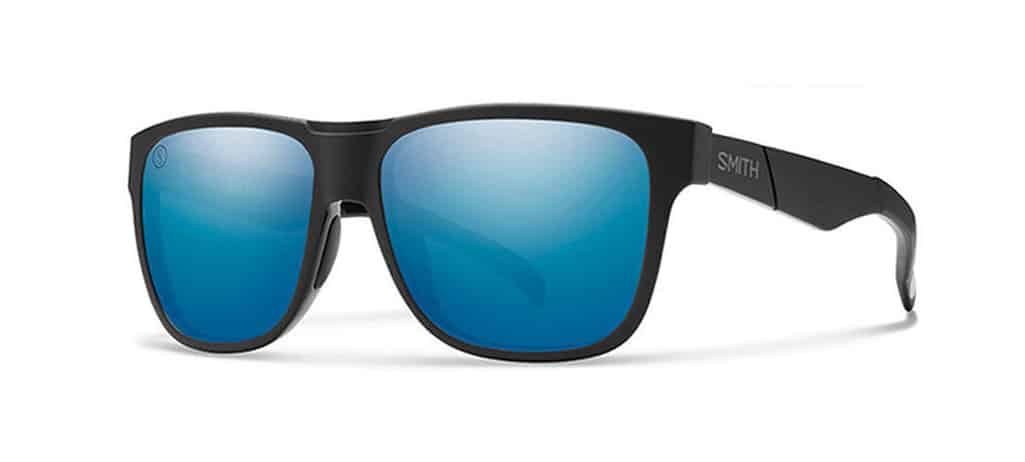
If you’re looking for a great pair of sunglasses for that sailor that’s accident-prone, Smith’s Lowdowns will give you top quality performance without breaking the bank. The Lowdowns offer great protection, a wide field of vision, and won’t slip off your face; perfect for when you need to scan for puffs, or get caught off guard by the jibe. Smith has a variety of lens colors and styles for any condition. (Croakies sold separately) $69 – 169 • www.smithoptics.com
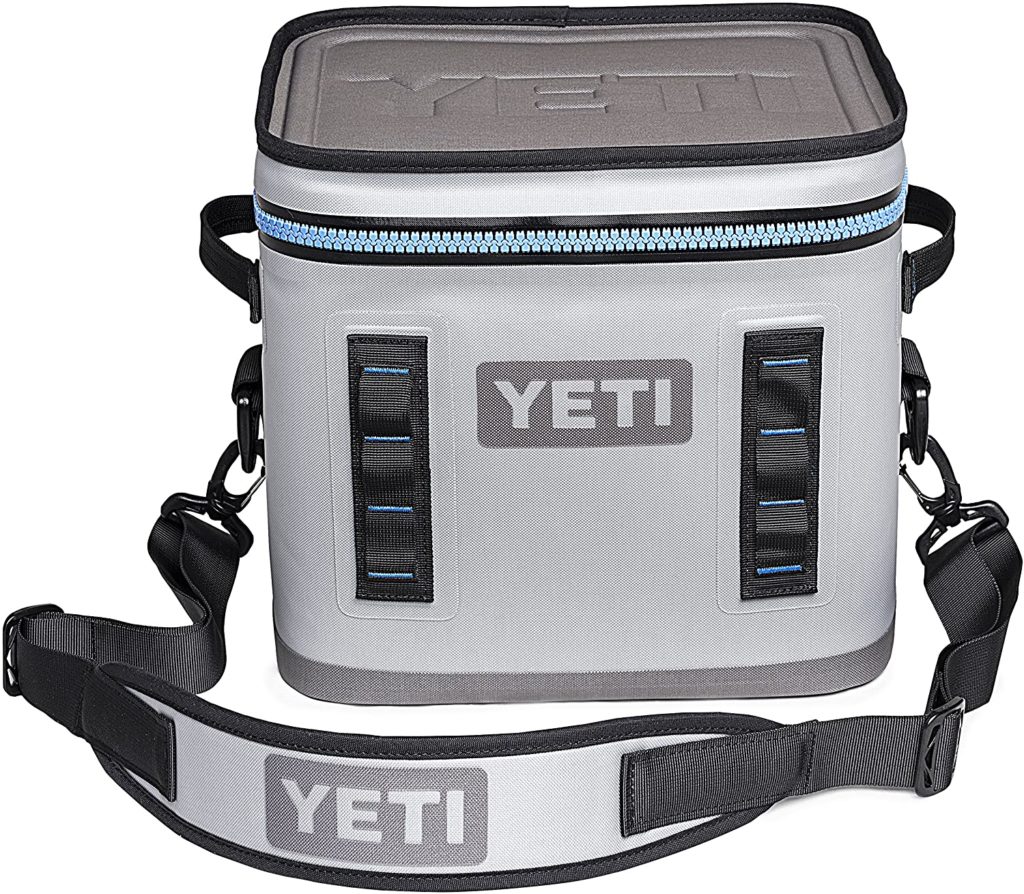
There are coolers, soft and hard, big and small, but for the cramped confines of a sportboat, the Yeti Hopper Flip 12 is the one you want. Yes, it’s $250 retail, which its critics say is overpriced for a soft cooler, but this thing is anything but soft. Built with rugged waterproof PVC and welded seams, it could very well be the last cooler you ever buy for your raceboat. Our test unit has endured a year of abuse, stored haphazardly in bilges, regatta after regatta and it’s no worse for the wear. Durable? Yes. Easy to open? Nope. But that’s the point. As advertised, the 10 x 11 x 12-inch Hopper kept our contents chilled from dock-off to post-race chilling, but the beefy leak-proof zipper isn’t meant to be opened and closed all day long. Fill the Hopper Flip before the race, using one frozen water bottle, open it once for a mid-day sandwich break, and again for the sail in to enjoy a six-pack of 12-ounce cold ones. $250 • www.yeti.com
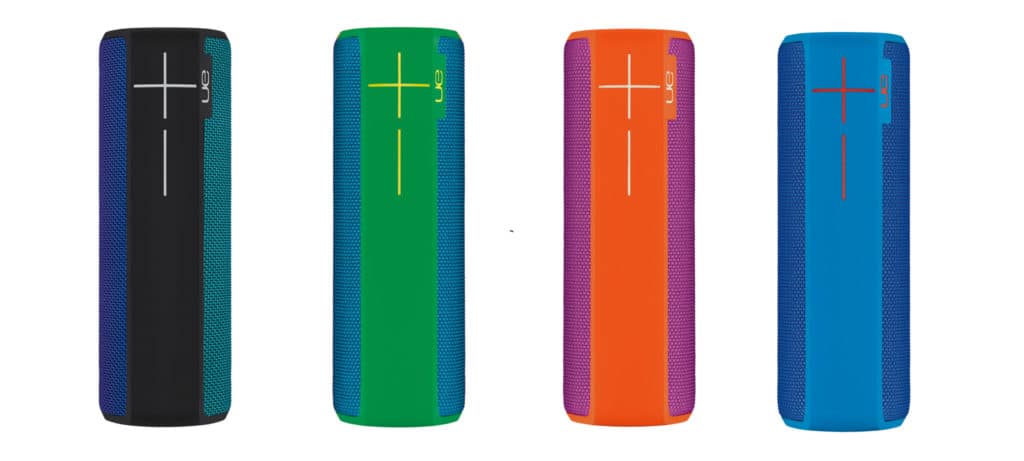
For sailors that don’t take themselves too seriously during a night of beer can racing, having music on the boat is an essential part of practice, or racing around the buoys for fun. If you’re looking for a waterproof speaker that you’re guaranteed not to lose if you capsize, then the UE Boom 2 is ideal. The rechargeable speaker is about the size of a tall-boy beer can and has a metal ring on the top of it to clip or tie into the boat. While some speakers get muffled by wind and spray, the UE Boom 2 is loud enough. It has a durable exterior that even the most accident-prone sailor would take effort to break. It holds a charge for up to 15 hours and connects to any device via bluetooth. $180-200 • www.ultimateears.com
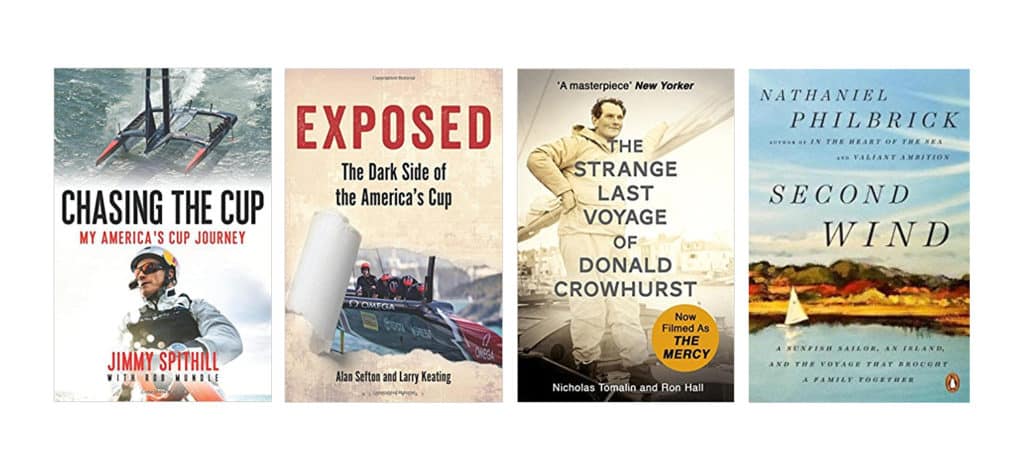
If you’re looking for book recommendations for your America’s Cup fanatic, we’ve got two that have passed our desks of late. First, Chasing the Cup: My America’s Cup Journey by Jimmy Spithill. If you’ve ever wondered what makes the talented ginger from Down Under so driven to win the America’s Cup (and then lose it to Team New Zealand in Bermuda), the revelation is in this memoir: he is a product of his upbringing: free-wheeling, rough and reckless, and always out to prove himself. The book journeys through his youth, his rise in the sport, and those who’ve opened doors for him. The narrative’s only shortcoming, however, the mere glimpses into the tight-knit inner world of his Cup campaigns. For this, there is Alan Sefton and Larry Keating’s new release: Exposed, the Dark Side of the America’s Cup. Two others currently on the editor’s nightstand: the fascinating and in depth The Strange Last Voyage of Donald Crowhurst, and Second Wind: A Sunfish Sailor, an Island, and the Voyage That Brought a Family Together by acclaimed author and Sailing World alum Nathaniel Philbrick.
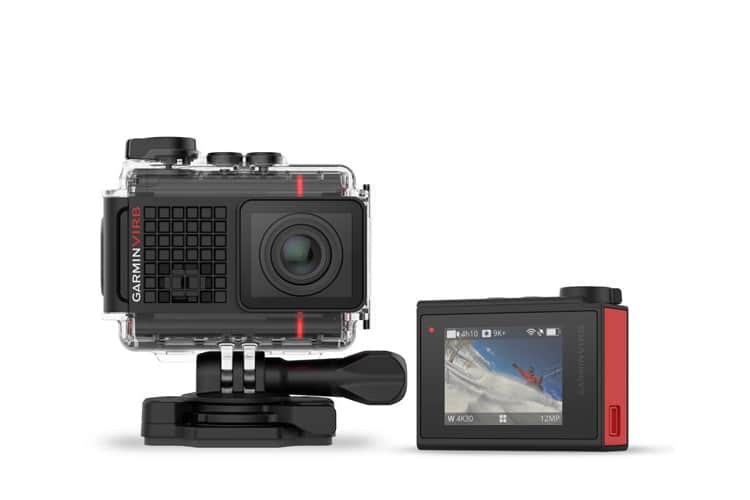
The VIRB Ultra 30 shoots video in 4k at 30fps. But the video alone isn’t the most amazing feature the VIRB has to offer. On par with Garmin’s other products, the G-Metrix allows athletes to overlay gauges and graphs with race data, allow sailors to analyze angle, speed, boat drift, water depth, wind speed and acceleration.With the VIRB taking high-action video is easier than ever. The Garmin VIRB boasts a 1.75 inch display, and voice controls to start and stop recording or even take a picture. Without taking hands off the sheets or tiller, the VIRB does its thing while you do yours. Show off real time stats by having VIRB livestream your race or practice data to YouTube, for coaches, spectators and fans to stay in the moment. The VIRB has a range of accessories do you can mount the camera virtually anywhere, including on a drone. It is compatible with a variety of Garmin watches and GPS devices to maximize data input. Garmin also offers a 360 camera if you want to take your capture to the next level. $399.99 • www.garmin.com
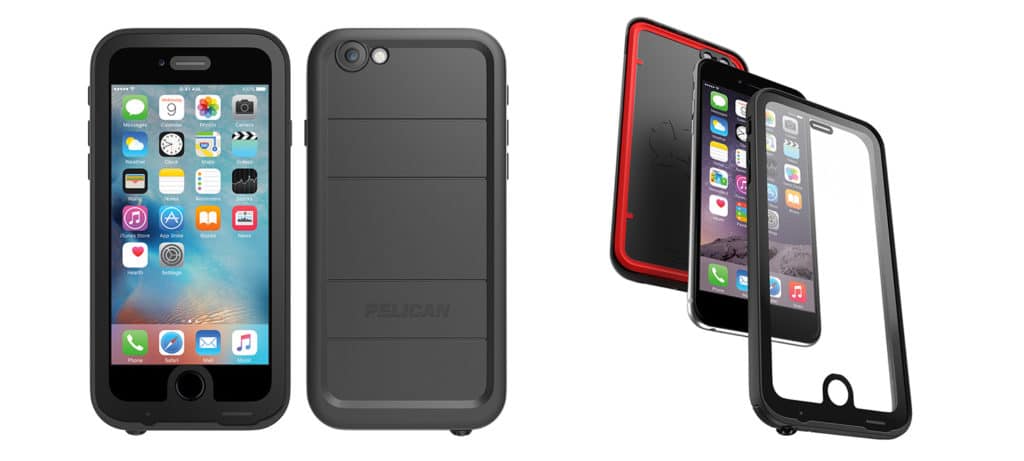
This case first caught our eye when a teammate jumped into the pool after a day of sailing with her phone without hesitation. There are a lot of waterproof cases for iPhones on the market, but none as trustworthy as the Pelican Marine Case. Just like their line of hard cases, the Pelican iPhone case is sturdy and tough. There are no soft jelly pieces to rub off, or flimsy seals, it’s made up of five layers of protection that withstand more than six feet of water for 30 minutes. With a long history of creating military equipment, there’s no doubt Pelican can deliver to sailors too. $22-70 • www.pelican.com
Watches
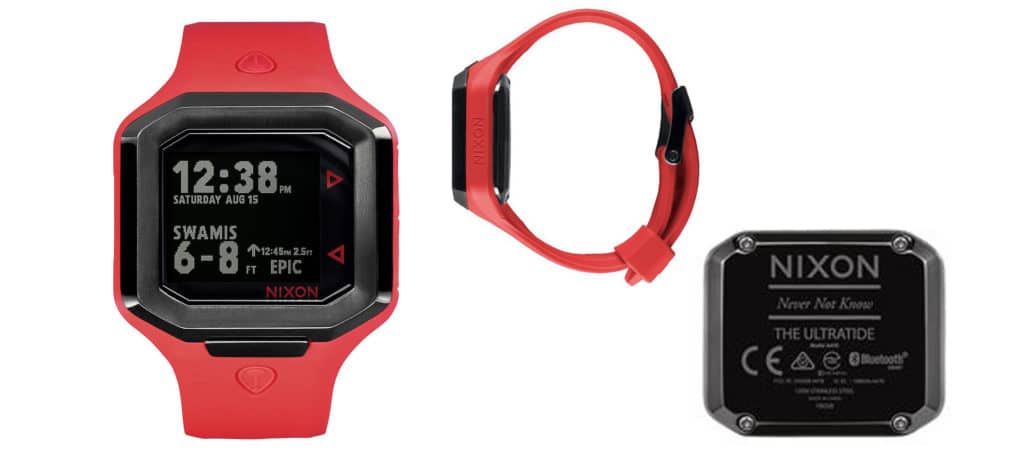
Nixon has made a smart watch for people who want to get away from their tech and get on the water with more ease. The Ultratide goes beyond just the tides, offering current conditions like wave height, wind direction and speed, swell direction, and the temperatures of both the air and water. You also get Surfline’s general assessment in a tidy one-word note, like “Fair” or “Good”. Powered from the Ultratide/Surfline app on your iPhone, pick your forecast locations sync it once and you’re done. Surfline collects live data for over 2,700 locations around the world, so it’s rare they don’t have the spot you are looking for. Good look trying to smash this watch too, the stainless steel case and rubber coating are sporty and tough and it’s guaranteed to stay in place. The best part? Throw away your cables! You don’t have to charge it, for at least a year, then when it tells you the battery is low, send it to Nixon and they’ll replace the battery for free and service it to make sure the watch stays water-tight. $300 • www.nixon.com
If your tactician is numerically challenged, tackle the issue “header” on with the handy Tacking Master, a wrist-worn navigational organizer that helps visualize wind trends, tacking angles, and starting-line bias. This is no gimmicky device, but rather a useful tool used by pros and amateurs alike. In the pre-start, take a wind reading off your compass and rotate the top dial (it’s like writing the bearing on your deck), and the move the mark dial (small orange triangles) to the location given by the race committee. Then, turn the lock-down dial keep them in place. Color-coded guides then show starting line bias (after taking a bearing). As you sail the course, make adjustments to the dial to track wind shifts and mark locations. $75 • www.tackingmaster.com Buy It Now on Amazon
Hardware
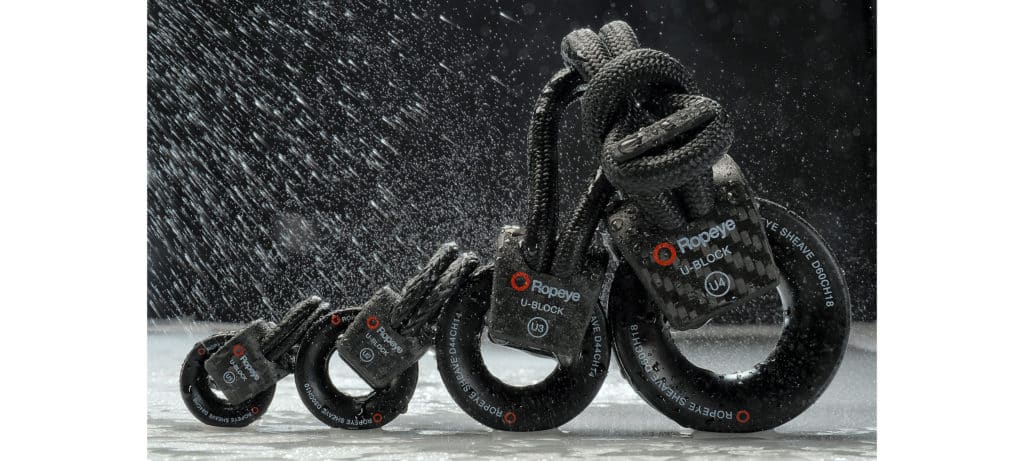
Opening a Ropeye catalogue or browsing their inventory of rigging “gadgets” is like walking through the front door of the brand’s creator Jaanus Tamme’s brain. Hailed as one the most innovating and creative individuals in the sailing hardware business today, the Estonian engineer and his R&D team deliver clever pieces of kit that make you rethink your control systems and attachments. Ropeeye’s earliest offering is the through-deck carbon and Dyneema Loop padeye, but they’ve expanded into stunningly simple low-friction bearing-free blocks. Start at the small end with a 1,000-kilogram safe-working load U1 block (shown), recommended for sheets, runners or halyard turning blocks. $165 • www.ropeye.com
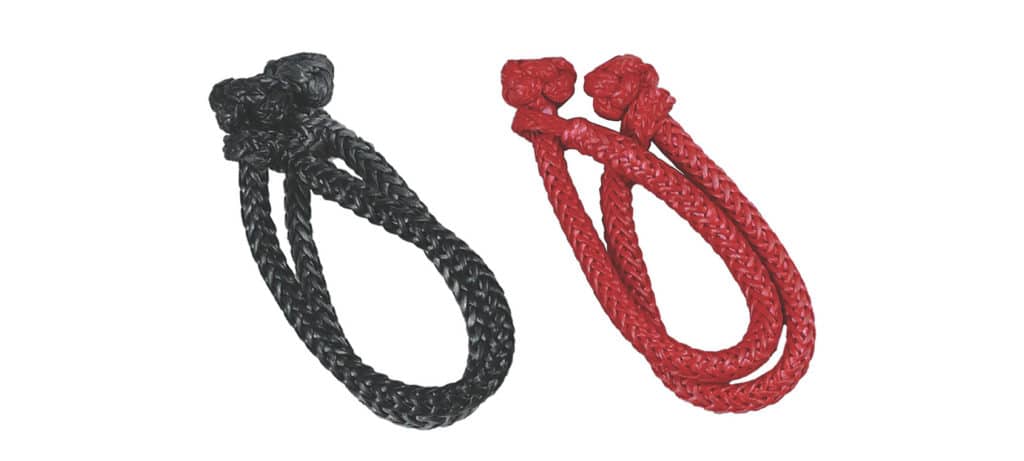
Ready to finally convert those fatigued metal shackles with the more modern “soft” variety? (Yes, it’s a good idea). Option No. 1: Go to the chandlery, buy a splicing kit and a few feet of Dyneema SK78, launch YouTube on the computer to learn how, and fumble for an hour perfecting your first few diamond knots. Option No. 2: type fisheriessupply.com into your browser and order a pair of factory-spliced D12 Soft Shackles (7mm). Trust us, option two is much easier. $35 • www.fisheriessupply.com

